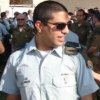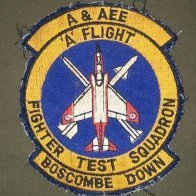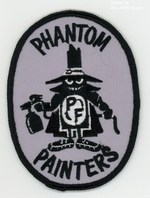Bristol Bullfinch FR.2 - No.611 (West Lancashire) Squadron, Royal Auxiliary Air Force, 1963
In late 1953 a North Atlantic Treaty Organisation (NATO) committee drafted NATO Basic Military Requirement 1 (NBMR-1) detailing the specification of a future requirement for a "light weight tactical strike fighter" capable of carrying both conventional or tactical nuclear weapons from dispersed or even rough airfields with minimal ground support. Intended to produce an aircraft that would become standard equipment across the air forces of the various NATO nations the competition stipulated many basic specifications on speed, range, weight and field length but also specified the preferred engine choice of the Bristol Siddeley Orpheus turbojet which was already funded by the US Mutual Weapons Development Program and which promised to meet the challenge of providing an engine that matched the requirements of lightweight, power, reliability and ease of maintenance.
After extensive testing and evaluation against it's competitors, NATO Defence Ministers met in April 1957 to announce that the Fiat Aviazone G.91 would be the first NATO lightweight strike fighter. But, almost immediately, there was considerable controversy surrounding the decision and all hope of unity and standardisation looked to be lost when the French government bailed out to pursue development of the Dassault Étendard whilst the UK government initially ignored the competition to concentrate on the continued production of the Hawker Hunter and the requirements of Air Ministry Operational Requirement 339 (OR.339) that would lead to the Hawker P.1121 project.
However, following the infamous 1957 Defence White Paper, the UK government began planning (plotting) to consolidate the remaining British aviation manufacturers into as few companies as possible and pulled Bristol Siddeley Engines back into Bristol Aircraft as a stepping stone to the early creation of the British Aircraft Corporation. Bristol's reward for a further merger involving English Electric, Hunting Aviation and Vickers-Armstrong was a production contract for 150 licence-built G.91's as the Bristol Bullfinch FGA.1 and Bullfinch FR.2. This order rejuvenated the entire G.91 programme leading to orders from Belgium, Holland, Greece, Spain and Turkey requiring Fiat Aviazone to expand their production facility at Piedmont and grant a licence production arrangement to the Flugzeug-Union Süd consortium consisting of Messerschmitt, Heinkel and Dornier. In return for the licence agreement with Bristol Aircraft, Fiat Aviazone were able to negotiate a comprehensive licence manufacturing agreement for the Orpheus engine for all non-British users of the G.91.
Entering RAF service in April 1961 the Bullfinch served with several front-line squadrons in RAF Germany and also with three squadrons of the Royal Auxiliary Air Force before finally being retired in 1988.
















